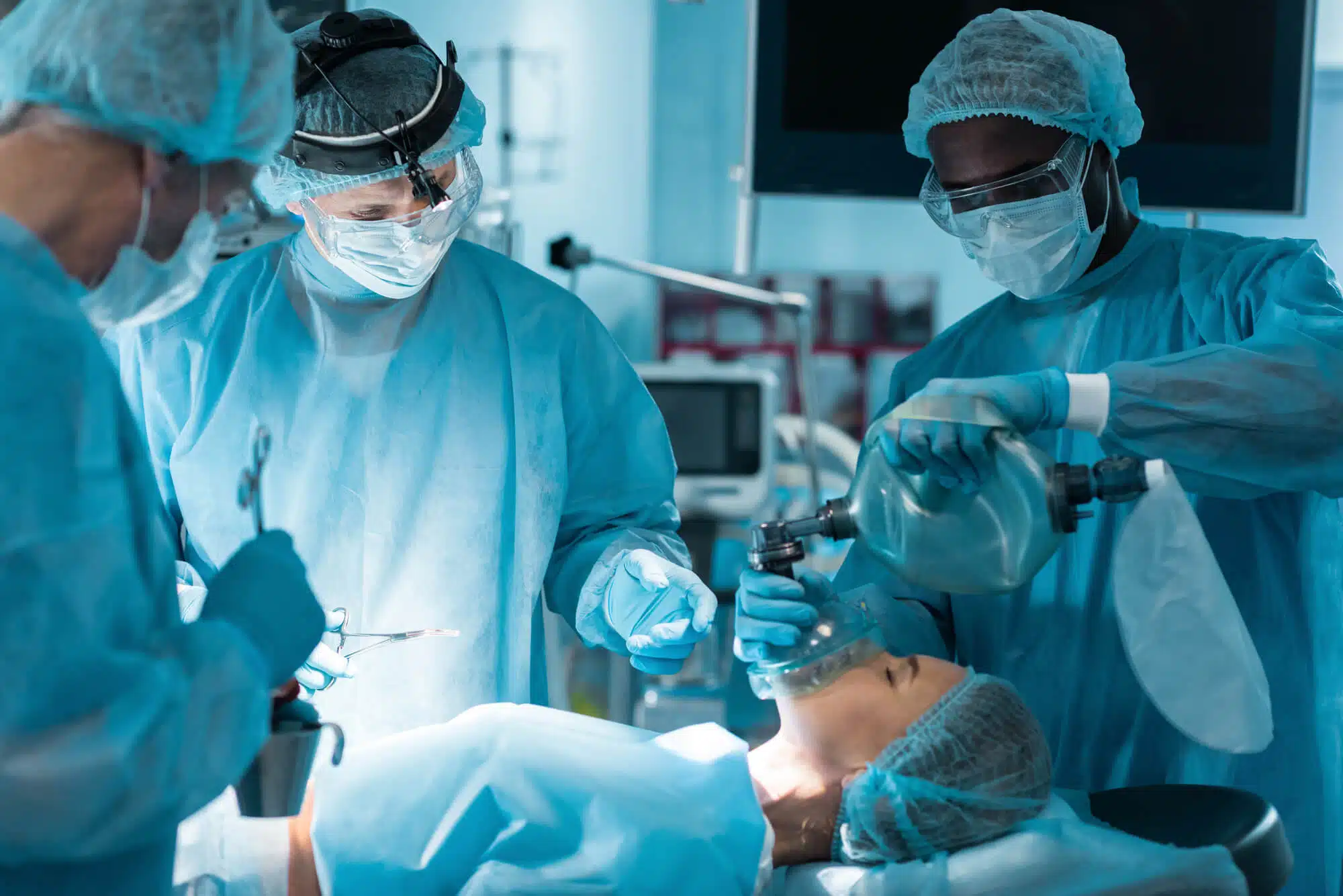Researchers at the Hebrew University discovered that during general anesthesia the substances are dispersed with the bloodstream throughout our body and also act in centers that are not essential for surgical anesthesia only

When we sleep our brain switches between two distinct states. One includes the NREM sleep (Non Rapid Eye Movement sleep), characterized by brain activity measured with the help of an EEG electroencephalogram) and expressed in slow electrical waves. The second is REM sleep, also known as "paradoxical sleep", in which the EEG is characterized by fast waves - a pattern that simulates a state of alertness. Other characteristics of REM sleep are rapid eye movements and extremely relaxed body muscles. REM sleep is the stage most often associated with dreams.
Apart from sleep, there are other factors that move the brain from a state of alertness to a state of unconsciousness. A prominent example is general anesthesia. When an anesthesiologist injects an anesthetic into our body, we lose consciousness and feel no pain during the operation. During anesthesia, the EEG simulates NREM sleep, and most of the body's muscles are in a relaxed state. Can it be argued that anesthesia is actually a state of drug-induced sleep? A new study published in the journal "Experimental Neurology" tries to examine this question and give it an answer.
A focused area in the brain stem
In recent years, a group of researchers from the Department of Cellular and Developmental Biology at the Institute of Life Sciences and the Center for Pain Research at the Hebrew University - Tamir Avigdor, Dr. Anne Meinert, Mark Baron and Prof. Marshall Debor - studied a limited and focused area in the brainstem of rats, the MPTA (mesopontine tegmental anesthesia area). . Injecting a minute amount of anesthetic directly into this area of a rat's brain immediately results in a state of general anesthesia. This experimental approach allows for more accurate and consistent research regarding the location of the effect of an anesthetic in the brain. The discovery of the MPTA at the time promoted the hypothesis that there is a direct connection between the mechanisms operating in sleep states and those behind general anesthesia. According to this hypothesis, anesthetics act on the same brain areas that are activated by endogenous molecules during sleep, thereby forcing the brain to go from a state of alertness to a state of coma. Basically, the anesthetics "hijack" the sleep mechanism.
In the current study, the researchers characterized brain activity (EEG) before, during and after anesthesia was induced by administering anesthetics directly to the MPTA of the rat. "In this way, we exposed to the anesthetic only the area where the 'hijacking' of the sleep mechanisms takes place, and prevented non-selective exposure of all parts of the brain to the anesthetic, as happens when the anesthesiologist injects anesthetic into the bloodstream," the researchers explained. In the experiments it was found that during the anesthesia obtained as a result of the administration of anesthetics to the MPTA area only, the EEG pattern in the rat brain alternates between two NREM and REM-like states, that is, between a state with brain activity of slow waves and a state with brain activity of brain waves fast This phenomenon was called by the researchers "paradoxical anesthesia", hence the name of the published scientific article (Paradoxical anesthesia: Sleep-like EEG during anesthesia induced by mesopontine microinjection of GABAergic agents). The situation is paradoxical because, although the animal is under deep surgical anesthesia, a pattern of brain electrical activity similar to that obtained during natural sleep could be seen.
The conclusions obtained as a result of this study are that anesthetics work through brain circuits that serve and are related to the mechanisms of sleep. "General exposure of the brain to the anesthetics distorts the 'pure' image, which is obtained as a result of focused exposure of the MPTA area only, because during general anesthesia the substances are dispersed with the bloodstream throughout our body and also act in centers that are not essential for surgical anesthesia only. In addition, we discovered that the MPTA region plays a central role in the transition between wakefulness and coma. This study even confirms a finding we received in a previous study, according to which destruction of the MPTA region affects the sensitivity of rats to various anesthetics. It can be said from this study that the MPTA area plays the role of a switch for the brain to switch between a state of alertness and a state of sleep/anesthesia", the researchers conclude.
More of the topic in Hayadan:
